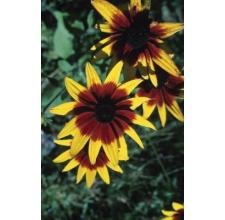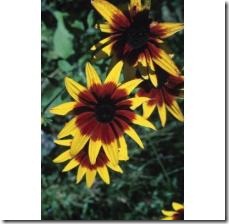The black-eyed Susan is also known as the coneflower. This perennial produces lovely blooms of bright yellow with dark brown centers. Black-eyed Susans are susceptible to bacterial leaf spot, which affects its health and appearance.
Identification
-
Bacterial leaf spot commonly affects the black-eyed Susan, flowering tobacco, geranium, zinnia and many others. This disease is caused by two types of bacteria known as Pseudomonas and Xanthomonas, which usually attack plants after an injury or disease.
Symptoms
-
The symptoms associated with bacterial leaf spot in the black-eyed Susan includes dark brown or black spots on leaves, leaf distortion and dead spots on leaves. Cankers often develop on the affected plant’s stem.
Control
-
Implementing proper cultural control practices is necessary to prevent bacterial leaf spot in your flowers. Avoid injuring plants because this provides bacteria with easy access to the plant. Fungicides are not effective against bacteria, so they do not control bacterial leaf spot. Remove and destroy infected leaves to prevent the spread of disease in your garden.


Deprecated: strpos(): Passing null to parameter #1 ($haystack) of type string is deprecated in /home/agriviek8Qv/agriviet.net/public_html/wp-includes/comment-template.php on line 2522